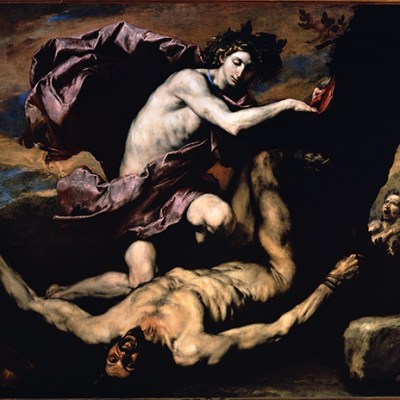I’m looking forward to ‘Victorian Giants: The Birth of Art Photography’ at the National Portrait Gallery, London (1 March–20 May 2018), which features Lewis Carroll, Julia Margaret Cameron, Oscar Gustave Rejlander, and Clementina Hawarden. Carroll/Dodgson needs no introduction and there was a large exhibition of Cameron’s photographs at the Victoria and Albert Museum in 2016, but it will be good to see Rejlander and Hawarden in their company. Most of Hawarden’s work is held by the V&A – and I’m curious of course about that museum’s new photography centre, which will open in the autumn.
Two exhibitions about the ancient world have caught my eye. The blockbuster is ‘Beyond the Nile: Egypt and the Classical World’ at the Getty (27 March–9 September 2018), which will range from the Bronze Age to late antiquity and promises impressive international loans – everything from Egyptian stone vessels sent to Minoan Crete to portraits from Ptolemaic Egypt. At the undersung Liebieghaus in Frankfurt there is ‘Medea’s Love and the Quest for the Golden Fleece’ (5 October 2018–10 February 2019). I’m slightly less interested in the thematic underpinning – the exhibition presents depictions of the Medea/Jason myth on Greek vases, in Roman wall paintings, and as Greek and Roman sculpture – than I am in the chance to see the exquisite gold and bronze objects (jewellery and weapons) from the Georgian National Museum.
At MoMA in May there is a full survey of the work of the Congolese artist Bodys Isek Kingelez, who died in 2016 (26 May–21 October 2018). As time went on his ‘extreme maquettes’ – colourful architectural models made from cardboard, paper, and sometimes plastic – grew in scale from representing imaginary single buildings to entire fantastical cityscapes, always responding in some way to his home city of Kinshasa. I first saw some of the models in ‘The Alternative Guide to the Universe’ at the Hayward Gallery in 2013. The Hayward was closed in 2016 for refurbishment, and it will be good for London to have it back again this year.
Fatema Ahmed is deputy editor of Apollo.
Keep up with Apollo’s 12 Days selection of art highlights here.


